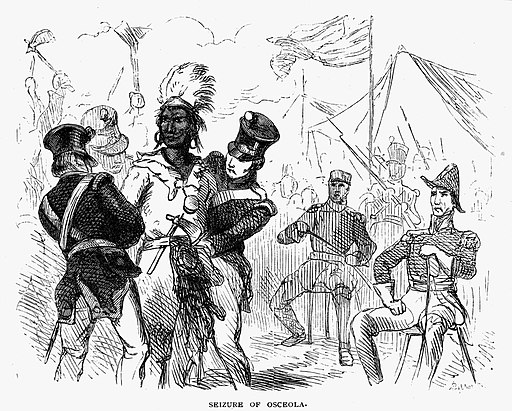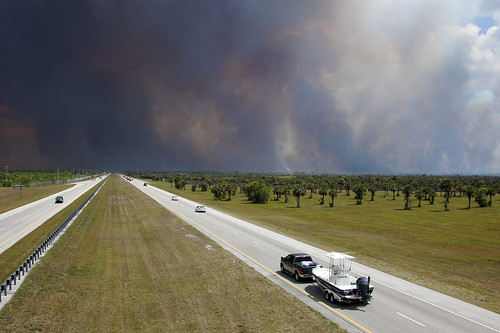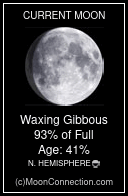Osceola, the Man and the Myths
 |
| The most famous painting of Osceola by George Catlin. George Catlin [Public domain], via Wikimedia Commons |
Over the last few years of doing the educational programs and living history, I have been trying to put to rest some of the myths surrounding our favorite Seminole, Osceola. Problem is, there has been so much written about him from the very beginning that is just not true. Other people read these things, and not knowing any better, copy them down, and the myths are perpetuated. Without doing any further study, people just don't know any better. So what I will do here is try and expose some of these widely believed falsehoods. Keep in mind that even some of these are debatable, and you may have a different opinion.
If looking for facts, avoid novels that are nothing more than historical fiction. Even before he died, newspapers were writing fictional accounts of Osceola. The problem is that many people read these fictional accounts and believe them as fact.
The absolute worst book that you should avoid is "War Chief of the Seminoles" by May McNeer. Her book claims to be from true stories in her family history, but 80 percent of it can be easily proved false by historical documentation. It is a children's book, and easy to read. Problem is that people read this book and assume it is true without checking other historical sources. McNeer is descended from Indian Agent Wiley Thompson, who we know was made Indian agent for the single purpose of removing the Seminoles from Florida. Thompson treated the Seminoles very badly and told them that they were nothing more than ignorant children. When a white man would have a grievance against an Indian, Thompson would usually side with the white man even when the evidence favored the Indian. Osceola finally executed Thompson for revenge of Thompson's bad treatment of Osceola and the Seminoles.
False: Osceola was born in Georgia near the Chattahoochee River.
What the Facts Show: Osceola was born of the Upper Creek Town of Tallassee, in southeast Alabama, in 1804. A prominent early Alabama statesman, Thomas Woodward, was himself part Creek, and intimately knew many of the Creek families. Woodward described the exact location Osceola was born. Osceola was of a band started by James McQueen. McQueen jumped ship in Charleston in the late 1690s and became a well-respected trader among the Creeks, and lived to be 128 years old. McQueen had many children, and was practically the Father Abraham of the Creeks, known as "the soft-shelled turtle."
False: Osceola's name means "Rising Sun."
What the Facts Show: The correct name would be Asi-Yaholo. It is from the words Asi, referring to the Black Drink, and Yaholo, as one who sings out. So it roughly translates to "Black Drink Singer." Yaholo is a title. Many of the Seminole names are their title in society. It is not uncommon for Creeks and Seminoles to have four different names. A title, a personal name, a name as a child, and a private name. Thomas Woodward calls Osceola, "Ussa Yoholo." At the same time, Woodward also mentions a warrior named "Hossa Yoholo," who was with Peter McQueen (son of James McQueen who became leader of the band after his father.) Both Peter McQueen and Hossa Yoholo fought against Jackson. Hossa Yoholo was known as "Singing Sun," and also had a father named Powell, but would have been about 15 or 20 years older than Osceola. The Muskogee word for sun is HvsE (Hus-E'), and the word for "Sun Rise" is Hvseaossv (Hus'-E-aos'-suh.) It is easy to see where the confusion has come from. To complicate things even more, I have found reference to four different people named William Powell who lived during that time. One is buried in the national military cemetery at Fort Gibson, Oklahoma.
 |
| Osceola from the McKenney-Hall prints. SMU Central University Libraries [No restrictions], via Wikimedia Commons |
False: An Englishman named Powell was Osceola's father.
What the Facts Show: This is probably the most debatable of my points on this page. It is well accepted that Osceola was of mixed English and Creek race. But how much of each different ancestry is debatable. Lt. M.M. Cohen wrote in 1836 that Osceola had a Creek Indian father who died soon after Osceola's birth and that William Powell married Osceola's mother soon after. Many claimed that Osceola did not speak English, further proving that he was not Powell's biological son. (But that is a point that is debatable as well.) George Catlin who painted Osceola quoted him as claiming that, "No foreign blood runs in my veins; I am a pure-blood Muscogee." Genetic tests done on what is thought to be Osceola's hair did not answer the question either but pointed to someone of mixed race. Whoever Osceola was, from Indian, white, or even black ancestry, he was 100 percent Seminole.
False: Osceola was a chief.
What the Facts Show: He was not a hereditary chief. He led by his own charisma, bravery in battle, and outspoken views against removal. He commanded at most 100 warriors. Many officers have stated that Osceola only led a small group. In Seminole society, Osceola was a war leader, not a political leader. Much like a general or sheriff. He gained recognition during the 1834 treaty talks as having great influence over Chief Micanopy. The Florida Seminoles and Miccosukees credit Medicineman Sam Jones (Abiaka) for carrying the cause against removal. There was no one "Head Chief" of the Indians in Florida. In fact, the largest single faction of Seminoles at the beginning of the war fled to Fort Brooke and accepted removal over fighting.
False: Osceola fought against Andrew Jackson.
What the Facts Show: Jackson's major campaign against the Creeks and Seminoles were in 1813, 1814, and 1818. Osceola would have been too young to be a warrior at this time. There is a possibility that Osceola and the people of his village did meet or were briefly captured by Jackson in 1814 and 1818. Most likely people confuse Osceola with Hossa Yoholo, who also had a father named Powell and fought with Peter McQueen.
False: Osceola's Black wife was captured by a slave hunter.
What the Facts Show: There is no written eyewitness account of this ever happening. Indian Agent Wiley Thompson makes no mention of it in his letters. If it did happen, I am sure the war would have started much earlier. The story became popular long after Osceola's death when it appeared in a questionable abolitionist pamphlet. Osceola himself said that he had no slaves. And at Osceola's capture, the question posed to him is "Why have you not surrendered any escaped slaves?" There was another Indian, Econchatti Micco in north Florida, who did have a wife captured by slave hunters, and whom had a son known as Oceola Nikkanochee.
Sketch of Osceola from Dr. Andrew Welch's 1841 book: http://www.johnhorse.com/highlights/keyimgs/details/05.8_r.htm
False: Osceola thrust his knife in a treaty.
What the Facts Show: This is our favorite story, but even this might not have happened. After searching through many eyewitness accounts and government documents, I find nobody who says this ever happened. Indian Agent Wiley Thompson makes no mention of it, and he detailed much of what happened at the talks. It is only logical that he would have written about it since he makes a big fuss over the Seminoles leaders who did not even approach the table to sign the treaty. The closest thing we have to an eyewitness account is an anonymous letter written to a newspaper, which says Osceola made threatening looks and flashed his knife outside the window of the building during the talks. Those who first make mention of the knife in the treaty are those who were not even in Florida during the time. Dr. Andrew Welch first mentions it in his 1841 romantically written book, but his book is full of historical errors. There is a sketch in the book of the event, but this was printed in England. John Sprague mentions it in a footnote in his 1848, making it look like he was not sure of the incident. A book written in 1931 has a copy of what is claimed to be a copy of the treaty, but on closer examination, it is only a small rip and not something made by a knife being thrust strongly into the paper. One thing we can conclude is that this story is a symbol of the resistance and struggle to stay in Florida. It is an image that represents an ideal. It is a story much like George Washington and the cherry tree, which is well loved but does not have any historical basis. Even now knowing this, it is still one of our favorite stories.
False: While in captivity, Osceola went to Washington and New York.
What the Facts Show: This is one of the most ridiculous stories that I have heard. Osceola never traveled further north than Charleston, South Carolina.
False: Osceola attended theater productions while in St. Augustine or Charleston, S.C.
What the Facts Show: There is no record of this. Osceola was captured in October 1837. He was ill from the time of his capture and only got worse until he died. He was too ill to escape from the fort in St. Augustine when 20 Seminoles escaped in November. At the end of December around New Year's Day, the prisoners in St. Augustine were moved to Fort Moultrie, outside Charleston, South Carolina. Osceola was very ill at this time and died in late January 1838.
 |
| See page for author [Public domain], via Wikimedia Commons |
 |
| See page for author [Public domain], via Wikimedia Commons |
Article Mirrored From http://web.archive.org/web/19991225112058/http://www.geocities.com/CollegePark/Stadium/1528/osceola.html
Read more archived articles at http://web.archive.org/web/20010720080931/http://www.geocities.com:80/CollegePark/Stadium/1528/. Especially under the section: "Stray articles not in the tour book".
Sources Used (good and bad ones):
The Complete Story of Osceola, a reprint by the St. Augustine Historical Society of the Florida Historical Quarterly Osceola Double Issue, Vol. XXXIII, Jan.-Apr. 1955, No. 3 & 4.
Seminole Hostilities, U.S. House Doc. No. 271, 24th Congress, 1st Session, June 3, 1836.
Woodward's Reminiscences by Thomas S. Woodward, 1859.
Osceola's Legacy by Patricia R. Wickman, 1991.
Army and Navy Chronicles, journal published 1835-1842.
New American State Papers, Military Affairs, 1979, 19 Vol. Set.
New American State Papers, Indian Affairs, 1972, 13 Vol. Set.
Notices of Florida and the Campaigns, by M.M. Cohen, 1836.
The Origin, Progress, and Conclusion of the Florida War by John T. Sprague, 1848.
A Narrative of the Early Days and Remembrances of Oceola Nikkanochee, Prince of Econchatti by Andrew Welch, 1841.
The Exiles of Florida by Joshua Giddings, 1858.
Osceola; Florida's Seminole War Chieftain by Minnie Moore-Wilson, 1931.
War Chief of the Seminoles by May McNeer, 1954.
The Complete Story of Osceola, a reprint by the St. Augustine Historical Society of the Florida Historical Quarterly Osceola Double Issue, Vol. XXXIII, Jan.-Apr. 1955, No. 3 & 4.
Seminole Hostilities, U.S. House Doc. No. 271, 24th Congress, 1st Session, June 3, 1836.
Woodward's Reminiscences by Thomas S. Woodward, 1859.
Osceola's Legacy by Patricia R. Wickman, 1991.
Army and Navy Chronicles, journal published 1835-1842.
New American State Papers, Military Affairs, 1979, 19 Vol. Set.
New American State Papers, Indian Affairs, 1972, 13 Vol. Set.
Notices of Florida and the Campaigns, by M.M. Cohen, 1836.
The Origin, Progress, and Conclusion of the Florida War by John T. Sprague, 1848.
A Narrative of the Early Days and Remembrances of Oceola Nikkanochee, Prince of Econchatti by Andrew Welch, 1841.
The Exiles of Florida by Joshua Giddings, 1858.
Osceola; Florida's Seminole War Chieftain by Minnie Moore-Wilson, 1931.
War Chief of the Seminoles by May McNeer, 1954.




